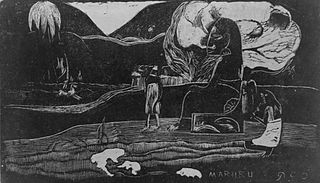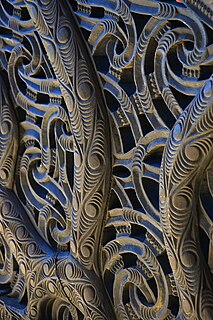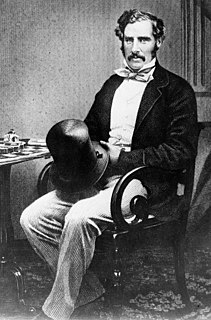
In Māori mythology, Tinirau is a guardian of fish. He is a son of Tangaroa, the god of the sea. His home at Motutapu (sacred island) is surrounded with pools for breeding fish. He also has several pet whales.

Māori mythology and Māori traditions are the two major categories into which the legends of the Māori of New Zealand may usefully be divided. The rituals, beliefs, and the world view of Māori society were ultimately based on an elaborate mythology that had been inherited from a Polynesian homeland and adapted and developed in the new setting.

In Māori mythology, Tangaroa is one of the great gods, the god of the sea. He is a son of Ranginui and Papatūānuku, Sky and Earth. After he joins his brothers Rongo, Tūmatauenga, Haumia, and Tāne in the forcible separation of their parents, he is attacked by his brother Tāwhirimātea, the god of storms, and forced to hide in the sea. Tangaroa is the father of many sea creatures. Tangaroa's son, Punga, has two children, Ikatere, the ancestor of fish, and Tū-te-wehiwehi, the ancestor of reptiles. Terrified by Tāwhirimātea's onslaught, the fish seek shelter in the sea, and the reptiles in the forests. Ever since, Tangaroa has held a grudge with Tāne, the god of forests, because he offers refuge to his runaway children.
Contents
Hinauri, sister to the Māui brothers, had married Irawaru, who was transformed into a dog by Māui-tikitiki. In her grief Hinauri throws herself into the sea. She does not drown but is cast ashore at the home of Tinirau, where she attracts his attention by muddying the pools he uses as mirrors. She marries Tinirau and uses incantations to kill his other two wives, who had attacked her out of jealousy (Biggs 1966:450).
In Māori mythology, Irawaru is the origin of the dog. He is the husband of Hinauri, the sister of Māui. Māui becomes annoyed with Irawaru and stretches out his limbs, turning him into a dog. When Hinauri asks Māui if he has seen her husband, Māui tells her to call "Moi! Moi!" whereupon the poor dog runs up to Hinauri. Learning the truth, she throws herself to Tangaroa never to be seen again.

In Māori mythology, as in other Polynesian traditions, Māui is a culture hero and a trickster, famous for his exploits and cleverness.
When her child Tūhuruhuru is born, the ritual birth ceremony is performed by Kae, a priest. [1] After this is done, Tinirau lends Kae his pet whale to take him home. In spite of strict instructions to the contrary, Kae forces the whale, Tutu-nui, into shallow water, where it dies, and is roasted and eaten by Kae and his people. When he learns of this Tinirau is furious and sends Hinauri with a party of women (often they are Tinirau's sisters) to capture Kae, who is to be identified by his overlapping front teeth. The sisters perform indecent dances to make him laugh. [2] When he laughs, they see his crooked teeth. Then the women sing a magic song which puts Kae into a deep sleep, and carry him back to Motutapu. When Kae wakes from his sleep he is in Tinirau's house. Tinirau taunts him for his treachery, and kills him (Grey 1970:69, Tregear 1891:110, Biggs 1966:450).
Later Tūhuruhuru is killed by the tribe of Popohorokewa for the death of Kae. In turn, Tinirau calls on Whakatau to destroy the Popohorokewa, which he did by burning them all in the house called Tihi-o-manono (Biggs 1966:450).
In Māori mythology, Whakatau is a son of Tūwhakararo and Apakura. One day Apakura has thrown her apron into the sea, and a sea deity named Rongotakawhiu took it and worked it into human form, and Whakatau was born. The sea deity teaches him the arts of enchantment. As the child grows older, people see kites flying at sea, but cannot see who holds the strings. Whakatau loves to fly kites, and is running along the floor of the ocean with his toy. One day, he comes ashore and the people try to catch him. Whakatau is too fast a runner and will let no one catch him except his mother Apakura. He then lives on land with her, and grows up into a famous hero.
In a South Island account, Tinirau, mounted on Tutunui, meets Kae, who is in a canoe. Kae borrows Tutunui, and Tinirau goes on his way to find Hine-te-iwaiwa, travelling on a large nautilus that he borrows from his friend Tautini. When Tinirau smells the south wind he knows that his whale is being roasted (Tregear 1891:110).








